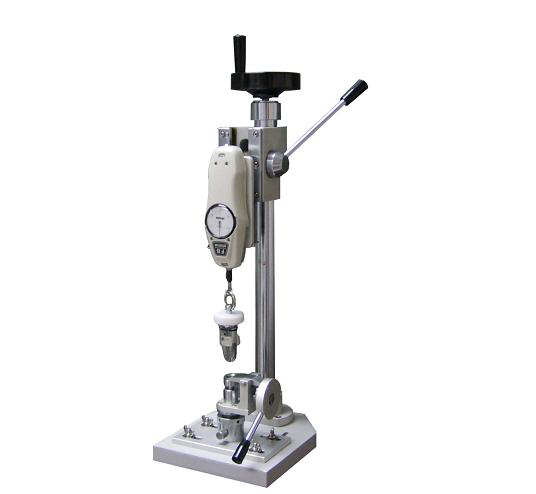
NewsInformation Center
In-depth analysis of button snap pull tester
2023/10/08
The button snap pull tester is a specialized device for testing the strength and durability of buttons. It can be used to test the mechanical properties of various types and sizes of buttons to ensure that they meet quality standards and usage requirements. The following is an in-depth analysis of the button snap pull tester, including its principle, testing process, related parameters and application areas.
I. Principle:
The button snap pull tester is based on the principle of mechanics, and tests the strength and durability of buttons by applying tensile force. During the test, the button under test is fixed on the clamping device, and then an increasing tension force is applied. During the test, information such as the maximum tensile force (breaking strength) that the button can withstand, the deformation of the button under a specific tensile force, and the damage pattern of the button can be recorded.


II. the test process:
1. Sample Preparation: Select button samples that meet the requirements and make test samples as needed.
2. Clamping device setting: fix the buttons on the clamping device, make sure the clamping is firm to prevent loosening in the testing process.
3. Parameter setting: set the relevant parameters of the tester according to the testing requirements and standards, such as testing speed, testing mode (static or dynamic), testing range, etc.
4. Start Test: Start the tester and begin to apply the tension force. The tester will gradually increase the pulling force until the buttons are destroyed or reach the set termination conditions.
5. Data recording and analyzing: During the testing process, data such as tension and deformation can be recorded in real time, and the test report can be generated as required.
III. related parameters:
In the button tension test, the commonly used related parameters include the following aspects:
1. Breaking Strength (Breaking Strength): The maximum strength of buttons destroyed under tension, usually expressed in terms of bearing force per unit area, such as N/cm² or kgf/cm². 2.
2. Load Capacity: The maximum tensile force that a button can withstand.
3. Deformation: the deformation of the button in the process of stress, which can be expressed by recording the deformation curve or measuring the change of shape and size of the button. 4.
4. Failure Mode: the destruction of buttons under the action of tension, such as fracture, deformation, cracking and so on.
Ⅸ. Application areas:
Button snap pull tester is widely used in textile, clothing, shoes, hats, bags and other industries to ensure product quality and safety. Specific applications include the following aspects:
1. button production quality control: through the button pull tester, it can determine whether the strength and durability of the product meets the standard requirements, so as to control product quality.
2. New material development and evaluation: For developing new button materials or improving existing materials, their applicability and feasibility can be evaluated by testing their tensile strength performance.
3. Comparison and selection of products: Through the tensile test of different brands or models of buttons, we can compare their strength and durability to provide a basis for product selection.
4. Design Improvement and Optimization: By understanding the deformation and destruction of buttons in the process of force, it can guide the improvement and optimization of product design to enhance the performance and reliability of products.
5. Quality certification and standards compliance: button snap pull tester can help enterprises to carry out quality certification and standards compliance to ensure that the products meet the relevant industry standards and regulatory requirements.
To summarize, the button snap pull tester is an important piece of test equipment for evaluating the strength and durability of buttons. By applying a pulling force and recording the relevant parameters, information on the fracture strength, load carrying capacity, deformation and damage pattern of buttons can be derived. This equipment is widely used in textile, clothing, shoes, hats, bags and other industries, and helps in product quality control, material development and evaluation, product comparison and selection, and design improvement and optimization.
Previous: What are the application areas of UV Aging Test Chamber?
N e x t : The Basic User Guide for Salt Spray Test Apparatus



